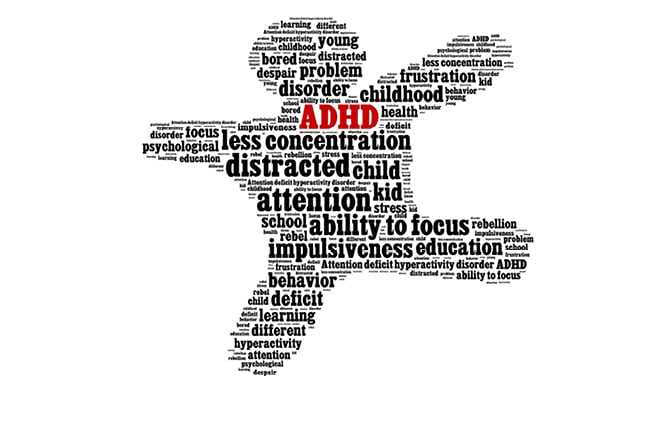
ADHD Students and the Responsive Torah Classroom
July 18, 2022
Managing ADHD in the Classroom
July 18, 2022Based on a series of lectures delivered by Rav Reuven Leuchter to mechanchim as part of the CoJDS Lilmod U’lilamed program.
Defining אמונה
Before we discuss teaching אמונה in the classroom, we first must define what אמונה is and how one develops it. People tend to think that אמונה is built through learning; seforim such as Nefesh Hachaim, Derech Hashem, or Daas Tevunos teach us the fundamentals of our faith. The thought is that אמונה is based a set of hashkafos that one has to learn. For example, אמונה consists of proofs that Hashem created the world and it didn’t just occur by chance.
This, however, is not the point of אמונה. These hashkafos may be necessary to learn, especially for a person who has doubts, who wonders about this topic, but it’s not the main thrust of אמונה that we teach our students in the classroom. For the main focus of אמונה, let’s turn to the רא”ש in the Orchos Chaim:
לבטוח בה’ בכל לבבך ולהאמין בהשגחתו פרטית ובזה תקיים בלבבך היחוד השלם בהאמין בו כי עיניו משוטטות בכל הארץ ועיניו על כל דרכי איש ובוחן לב וחוקר כליות כי מי שאינו מאמין ב”אשר הוצאתיך מארץ מצרים” אף ב”אנכי ה’ אלקיך” אינו מאמין ואין זה ייחוד שלם כי זה הוא סגולת ישראל מכל העמים וזה יסוד כל התורה כולה
אורחות חיים אות כו
The רא”ש states that we have to have אמונה in השגחה פרטית, which is the idea that Hashem is intimately interacting with everything in the world. The רא”ש goes on to say that anyone who doesn’t believe that Hashem took us out of Mitzrayim, which is a significant example of His interacting with the world, doesn’t believe in “אנכי ה’ אלקיך” – the very existence of Hashem.
Shouldn’t it be the other way around? Hashem must exist to take us out of Mitzrayim. He must first exist and then He can be involved. The רא”ש teaches us that when it comes to our אמונה, the opposite is true. אמונה is believing in השגחה פרטית – that Hashem is involved in the world, interacting with us, even interfering, as we go through our lives.
השגחה פרטית
Where do we see השגחה פרטית in Chumash? A good start is פרשת לך לך. In a most obvious way, Hashem involves himself in Avraham Avinu’s life. He cares about what Avraham does, instructs him in how to grow, to become better. He tests Avraham repeatedly, certainly interfering with his life. One could say that this main message of אמונה is symbolized by פרשת לך לך, not פרשת בראשית.
We tend to limit the meaning of השגחה פרטית to the idea that everything that happens to us happens for a reason. Of course, this is true, but it’s so much more than that. Let’s look again at the words of the רא”ש. He states, “כי עיניו משוטטות בכל הארץ ועיניו על כל דרכי איש ובוחן לב וחוקר כליות”. Hashem’s “eyes” are focused on the Earth and what we think and do. He is interested in what we do. We are engaged in something and the בורא עולם is interested in that. He investigates and checks what we’re doing and even what we’re thinking and feeling in our hearts. No one investigates or looks into something that doesn’t interest him or is not important. If Hashem is interested in us, we must be important!
We see that a significant component of השגחה פרטית is the understanding that we’re important in the eyes of Hashem. So, the two big parts of אמונה are the knowledge that Hashem is intimately involved in the world and our lives, and that he cares about each one of us and our growth, our education.
Teaching אמונה
How can we teach our talmidim אמונה in the course of Chumash study? The רמב”ן, in the introduction to his commentary on Chumash, gives us a perspective on how אמונה is built:
“עלה אלי ההרה והיה שם, ואתנה לך את לוחות האבן והתורה והמצוה אשר כתבתי להורותם”. כי ‘לוחות האבן’ – יכלול הלוחות והמכתב, כלומר עשרת הדברות, ו’המצוה’ – מספר המצות כולן, עשה ולא תעשה. אם כן, ‘והתורה’ – יכלול הספורים מתחילת בראשית, כי הוא מורה אנשים בדרך בענין האמונה
The רמב”ן quotes the pasuk that states on Har Sinai, Hashem gave משה three things: the לוחות, the תורה, and the Mitzvah. He explains that the word לוחות refers to the tablets and the words on them, which is the עשרת הדברות. The word מצוה refers to all the mitzvos. What, then, is תורה? He explains that this refers to the stories found in the תורה, because it’s these stories that teach people how to have אמונה.
אמונה is built through stories. אמונה isn’t something that you know; rather it’s something you experience, and the enduring message you develop from experiencing the story. A good story has a central message that it communicates. A story is an experience – a חויה – it’s something that you live through. אמונה is no different.
Of course, you do need to know. For example, the דרך ה’ speaks about תחיית המתים; he speaks about כשפים; he speaks about everything. A person does need the knowledge reading these basic issues that relate to אמונה. But the development of אמונה is through stories.
Foxes and Cheese
It seems that we’re often not aware of this when we teach Chumash. We teach Chumash in a very analytical way. We ask all sorts of questions, which are definitely valid, but they often distract from the focus of the message of the story. In a discussion of אמונה we cannot discourage asking questions! Still, asking about the technical details of a story or a text doesn’t help to advance the message, since it distracts from the experience of the story. Allow me to share an example:
When I was a child in school, our teacher was discussing the legend of the raven and the fox. In this legend, the raven has a piece of cheese and the fox wants the cheese. The fox tells the raven , “You have such a beautiful voice,” so the raven opens his mouth to sing and, of course, drops the cheese. There was a boy in my class who had never spoken up to that point, and now he finally had a question. Everyone strained to hear what question this boy finally had. He asked, “But foxes don’t eat cheese.”
It’s a valid point; foxes don’t eat cheese. But it’s a distraction from the message of the story. It leads you not to analyze the story, to experience the lesson that comes from it, and to feel it in your heart, but to focus on something else, such as the diet of foxes.
Of course, every detail in the Torah is advancing the “story.” But to understand this – how each tiny detail is relevant – is for great people, much bigger than us, to understand. For us, we must focus on the story the Torah is telling us, with an understanding that there are certain things in the story that are technical points that lead us away from it.
Stories
Let’s look again at the אורחות חיים that we quoted earlier:
לבטוח בה’ בכל לבבך ולהאמין בהשגחתו פרטית ובזה תקיים בלבבך היחוד השלם בהאמין בו כי עיניו משוטטות בכל הארץ ועיניו על כל דרכי איש ובוחן לב וחוקר כליות כי מי שאינו מאמין ב”אשר הוצאתיך מארץ מצרים” אף ב”אנכי ה’ אלקיך” אינו מאמין ואין זה ייחוד שלם כי זה הוא סגולת ישראל מכל העמים וזה יסוד כל התורה כולה
The רא”ש says that anyone who doesn’t believe that Hashem took us out of Mitzrayim – an example of His interacting with the world – doesn’t believe in “אנכי ה’ אלקיך” – the very existence of Hashem. We see again that when it comes to our אמונה, we must have stories. The existence of Hashem is not a story or experience. The story of Hashem is how he interacts with the world. This is why you first need to tell the story of Hashem’s interaction with the world and then you can develop the belief of “אנכי ה’ אלקיך”.
People often consider those who work in kiruv to be experts in אמונה and teaching about אמונה, as they are often speaking and teaching about proving Hashem’s existence in the world. It’s true, many are good at that. But that’s not what we want when we’re teaching אמונה. It would be a mistake to approach אמונה in a very intellectual way; to clarify first that there is Hashem, and then to understand Hashem who exists also interacts with the world. It sounds very logical, but it doesn’t work like that.
אמונה is that Hashem spoke to Avraham and said “לך לך”. He acted, and still acts, in a way of שכר ועונש. He is interfering with the world every day. Even when you teach בראשית, focus on that He spoke to אדם הראשון. He commanded him; He was disappointed with him and punished him.
What story do you tell?
There are different stories that we tell when we’re teaching Chumash. It would be great if it could be the same story over and over because repetition is what makes something have meaning to people. This idea is famously expressed in the beginning of מסילת ישרים. Knowledge of the truth doesn’t really change the way people behave. What does, is encountering a reoccurring theme. When an idea comes up again and again, when the same theme answers many questions, and when it helps you make sense of many things, this idea becomes truth and guides the way you live. Perhaps we underestimate what the Mesilas Yesharim tells us and put too much stock in knowledge. Knowledge is not how you live; it is not a guiding factor for people. The solution is התמדה and חזרה of the simple themes of the עיקרי אמונה.
As you prepare to teach others about אמונה, start by asking, what do you really identify with? You can only transmit what you are experiencing and living yourself. What are you really living? You can pass along to the student your own אמונה. You aren’t obligated to cover every topic of אמונה from all sides. Instead, develop a grasp of a main message that you live in your everyday life and that will come up over and over when you teach Chumash.
Here are just a few possible themes, as examples:
- שכר ועונש
- Hashem has a plan
- Hashem wants to make a person/klal Yisrael great
- Hashem wants kedusha to be revealed, Eretz Yisrael (for example, the mitzva of Shmitta this year)
Let’s discuss an incident in Chumash and how it can be approached to bring out the “story.” פרשת וירא begins with Avraham hoping to have guests he could help. It was three days past his ברית מילה and terribly hot outside – hotter than Phoenix in the summer. You could cook an egg outside; it was so hot. No one goes out in that. Why did Hashem make it so hot that day? To save Avraham from הכנסת אורחים. So, what did Avraham do? He wanted to do חסד. He went out in the heat, in his weakened condition, to look for guests.
There’s a question to ask here. Was Avraham a “nudnik?” Is it חסד to try to help someone when there is no need? Imagine going over to an old lady who doesn’t want to cross the street and convincing her to let you help her cross, just so you could do חסד. Sounds like a nudnik! And since Avraham wanted to do חסד so badly, Hashem was forced to do another miracle to satisfy his need. He couldn’t even send people because it was so hot, so he had to send angels. Why did Hashem do this? Why did Avraham do this?
These questions help us focus this story about the greatness of the חסד of Avraham Avinu. His חסד was like the חסד of the בורא עולם; in fact, Avraham learned to do חסד this way from Hashem’s example. There was no need for Hashem to create the world and people. Hashem created an entire world, and put people in it, just to do חסד. Avraham learned from this that the ultimate form of חסד is not to fill an existing need, but to create the need and fill it.
As an aside, teaching in the classroom is this kind of חסד, too. Many rebbeim will agree that their students don’t know – yet – that they want to learn Torah, so it’s not like rebbeim are providing Torah for talmidim who are thirsting for it. A rebbi first must create their thirst, and then work to satisfy it.
Telling stories
There are other examples from Tanach where we see that a truth isn’t learned and then known, but must be experienced. Hashem said to משה, “ויאמר ה’ אליו מי שם פה לאדם או מי ישום אלם או חרש או פקח או עור הלא אנכי ה’” (שמות ד, יא). Rashi explains that with the question מי שם פה, Hashem was reminding משה how he helped him speak when פרעה was judging him for killing the Egyptian. With the question of מי ישום אלם, Hashem reminded משה how פרעה inexplicably insisted on putting משה to death. או חרש was to remind משה how פרעה’s associates didn’t hear when he told them to kill משה. או עור – they didn’t see when משה fled from the executioner’s platform.
Why did משה need these specific reminders of the incident that had happened to him years prior? Did משה not know that Hashem is the one who gives us all the ability to speak, and that if He wanted משה to speak to פרעה, He would make it happen? We certainly can assume that משה ’s knowledge of Hashem and his abilities was complete. Yet, when Hashem wanted to make this point to משה, he reminded him of the stories. More than any intellectual understanding of Hashem’s ability and role in the world, the stories of השגחה that משה lived through formed the basis of his אמונה. There could be no stronger message of מי שם פה than a story that משה experienced.
Another wonderful example can be found when דוד bravely offered to fight גלית. שאול asked him why he, a young lad, thought he would be able to defeat the mighty warrior גלית. We would assume that דוד might respond with words of faith in Hashem, declaring that if Hashem gives him the strength to defeat גלית, he would be successful. But instead, דוד told a story (שמואל א פרק יז’):
ויאמר דוד אל שאול רעה היה עבדך לאביו בצאן ובא הארי ואת הדוב ונשא שה מהעדר: ויצאתי אחריו והכתיו והצלתי מפיו ויקם עלי והחזקתי בזקנו והכתיו והמיתיו: גם את הארי גם הדוב הכה עבדך והיה הפלשתי הערל הזה כאחד מהם כי חרף מערכת אלהים חיים:
דוד described how, as a shepherd, he and his flock were attacked by a lion and a bear, and he was able to fight them off and kill them and save the lamb that they had taken, so he would also be able to fight גלית. It was his experience of Hashem giving him the strength to fight and defeat a frightful enemy that gave him the faith that Hashem would help him now. This story that דוד lived through became part of him and strengthened his אמונה more than any knowledge ever could.
Experiencing the story, teaching אמונה
I always ask people; doesn’t it seem that the Torah is such a bad storyteller? Why doesn’t the Torah just tell us the meaning of חסד? Earlier, we had to work and pry from the פסוקים by Avraham Avinu our lesson of חסד. It seems like the Torah should be a text that teaches us what we need to know. And if the Torah doesn’t define חסד anywhere directly, why didn’t Chazal write such a book? Every culture has great works of literature that affect societal change – where is our such literature? We have מדרשים, but they are so concise; in order to get the entire story, you must build and build upon a מדרש, like we did with the story of Avraham’s חסד.
The answer is that if the Torah told us the definition of חסד, it would just be knowledge. We must create the story ourselves. When we create the story as we learn Torah, we are experiencing it. That’s how we build אמונה. We don’t want to influence people; we want to build people. A story is consumed, and it influences us somewhat, but when we experience it, it becomes alive for us. It becomes our own חויה, our חיות. And when it’s our חיות, the students will be uplifted by us and make this אמונה part of their own story.
Rabbi Reuven Leuchter, a prominent disciple of Rabbi Shlomo Wolbe ztl, is one of the leading educators and baalei mussar of our generation. Rabbi Leuchter has served as Mashgiach in several yeshivos. Today, he heads a kollel and delivers shiurim and mussar vaadim throughout Israel and abroad. In addition, he trains future rabbis for rabbinic or kiruv careers with Ner LeElef.

